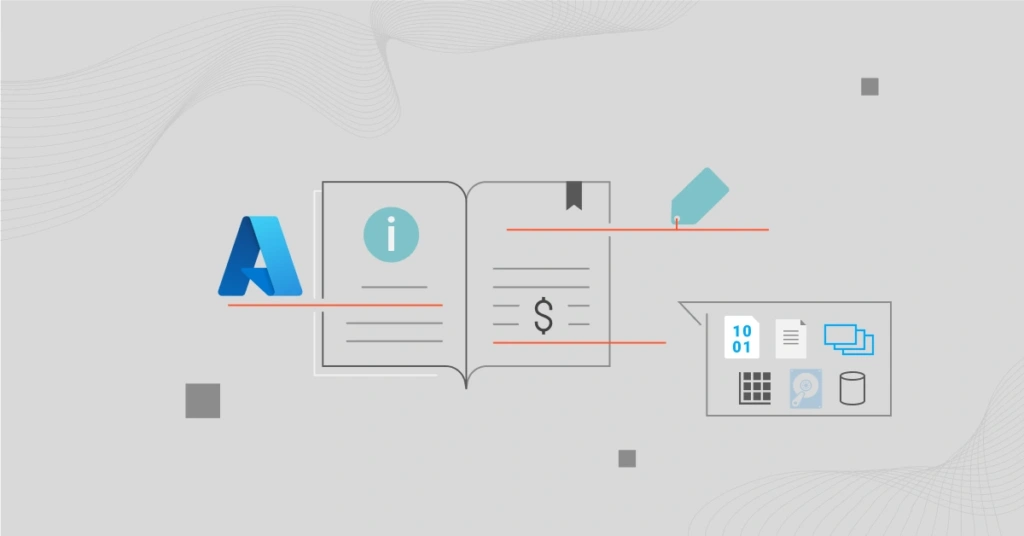If you have trouble understanding Microsoft Azure Storage costs, you’re not alone. Azure Storage options can feel like a multi-layered maze of storage account types, tiers, pricing pages, specs — and then some.
Yet, understanding your cloud cost drivers begins with looking at where your money goes. Only then can you tell if you are getting value for your money.
That’s how you can discover exactly what steps you need to take to reduce your Azure storage costs, optimize usage, and maximize the return on your cloud investment.
In this Microsoft Azure Storage pricing guide, we’ll break down the different Azure Storage cost factors. And, yes, without the jargon. We’ll also share how Azure Storage billing works, Azure Storage cost optimization tips, and more.
How Azure Storage Pricing Works
Azure Storage uses a pay-as-you-go model — you only pay for what you use. No upfront payments or long-term contracts are required.
You can access and use Azure storage on demand, eliminating the need for advance provisioning and reducing the risk of over- or under-provisioning.
You can also commit to a one- or three-year contract for discounts if your storage usage is consistent.
Azure Storage charges vary by storage capacity, transactions (read/write operations), and data transfer volume.
- Bandwidth: The data transfer rate at which your storage account is located. You pay for the bandwidth used to access storage outside your current location.
- Transactions: Every REST request to a storage service (blob, table, or queue) is subject to billing.
- Total capacity: The total amount of data you keep in persistent storage, including blobs, messages, entities, applications, and metadata.
That’s only the start of Azure Storage pricing. Here’s the rest of the story in plain English.
Azure Storage Cost Drivers
The exact price you pay for Azure Storage depends on several factors, including:
- Storage account type: General purpose, File storage, or Blob storage.
- Storage service: Block blob, page blob, file, table, queue, disk storage, managed disks, Data Lake Storage Gen2, NET files, or Elastic SAN.
- Storage tier: Premium or Standard.
- Access tier: Hot, Cool, or Archive.
- Storage capacity: Cost per terabyte per month.
- Payment option: On-demand or reserved (one-year or three-year commitment).
- Region: Azure has 48 global locations.
- Data transfer charges.
- Data read, write, and retrieval fees.
- Redundancy level: LRS, ZRS, GRS, RA-GRS, GZRS, or RA-GZRS.
- Management type: Managed or unmanaged service.
Several of these factors interact to shape your final bill. The following sections break down each Azure Storage pricing component to help you optimize costs.
Azure Storage Costs By Account
The type of Azure Storage account determines the kind of data you can store, how you store it, and which features or options you can configure.
Each account creates a unique namespace for your data, accessible anywhere over HTTP or HTTPS using a REST API.
Azure Storage is highly persistent, available, secure, and scalable.
The table below compares what each offers:
|
Azure storage account type |
Azure storage services supported |
Deployment with |
Redundancy options available for the account |
Pricing feature |
|
General purpose v1 |
Block blobs, page blobs, files, queues, tables, and disks |
Classic, Resource Manager |
LRS, GRS, RA-GRS |
Low transaction fees; high storage costs |
|
General purpose v2 |
Block blobs, page blobs, files, queues, tables, Data Lake Gen2, disks, and more |
Resource Manager |
LRS, GRS, RA-GRS, ZRS, GZRS, RA-GZRS |
The lowest per GB storage charges. Optimized for most workloads |
|
Block blob storage |
Block blobs, append blobs |
Resource Manager |
LRS, ZRS |
Optimized for high transaction rates |
|
Blob storage |
Block blobs, append blobs |
Resource Manager |
LRS, GRS, RA-GRS |
Optimized for append and block blobs |
|
File storage |
Files only |
Resource Manager |
LRS, ZRS |
Enterprise-scale optimized |
Table: A comparison of Azure Storage account type features
Again, we advise you to skip this table and read about the features in each account from the sections below first.
Azure Storage Costs By Service
Azure offers several core storage options, each designed for specific data types and workloads: Blobs, Files, Queues, Disks, Tables, and Data Lake Storage Gen2.
Each Azure storage family is ideal for a specific use case. Check this out:
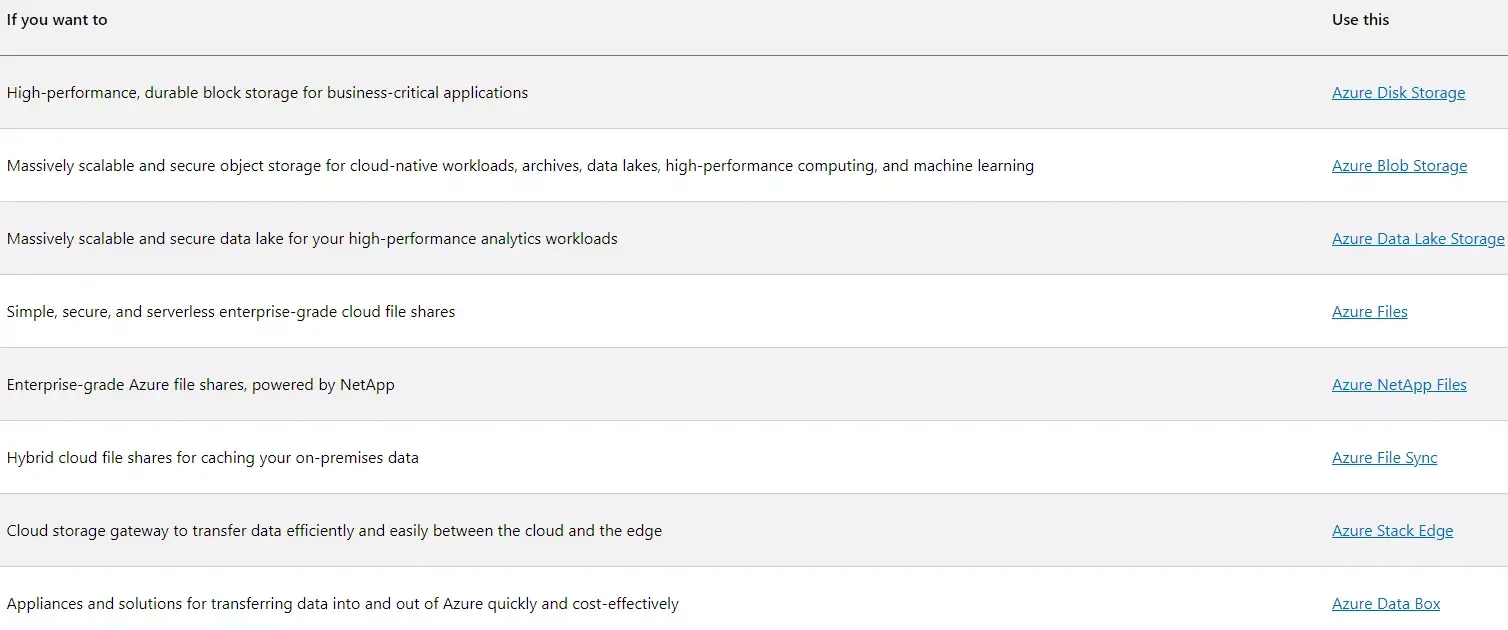
Here’s a breakdown of costs for each Azure storage service.
Pricing for Azure Blob Storage
Blobs (Binary Large Objects) are object-based storage used for massive amounts of unstructured data — ideal for cloud-native workloads, high-performance computing, backups, archiving, and machine learning.
You can configure Blob Storage through the Azure REST API, CLI, or PowerShell, choosing between:
- Block blobs: For streaming and storing unstructured data like text, video, or backups.
- Page blobs: For random-access files up to 8 TB, such as virtual hard disks.
- Append blobs: For append-only operations, often used in logging.
Blob pricing depends on data volume, region, redundancy, operations, and data transfer.
Access tiers affect pricing:
- Hot: Frequently accessed data.
- Cool: Infrequently accessed data (≥30 days).
- Archive: Rarely accessed data (≥180 days).
Redundancy options and pricing:
- LRS: Cheapest, stores three copies in one location.
- ZRS: Slightly higher cost, spreads data across three zones in one region.
- GRS / RA-GRS: Higher cost, replicates to a secondary region for geo-redundancy; RA-GRS allows read access from the secondary site.
- GZRS / RA-GZRS: Most expensive, combines zone and geo-redundancy for critical workloads.
Blobs also include early deletion charges for Cool (30-day) and Archive (180-day) tiers, plus small feature-based costs such as indexing and encryption scope fees.
One more thing.
Pricing for other block blob features includes $0.01/10,000 blob changes when enabled, $1 per encryption scope/month, and $0.03 per tag for blob indexing. See more about the costs of Azure Block Blob storage here.
Pricing for Azure Files Storage
This is a fully managed cloud file-sharing option. You can access your files via SMB and NFS protocols.
You can mount Azure Files shares concurrently in cloud or on-premises deployments of Linux, Windows, and macOS. In addition, you can cache Azure Files shares on Windows Servers using Azure File Sync, providing fast data access at the point of use.
Currently, Azure Files storage does not offer read-access geo-redundant storage (RA-GRS) or read-access geo-zone-redundant storage (RA-GZRS).
Pricing for Azure Files storage on-demand (pay-as-you-go) in the US West region with LRS redundancy is as follows:
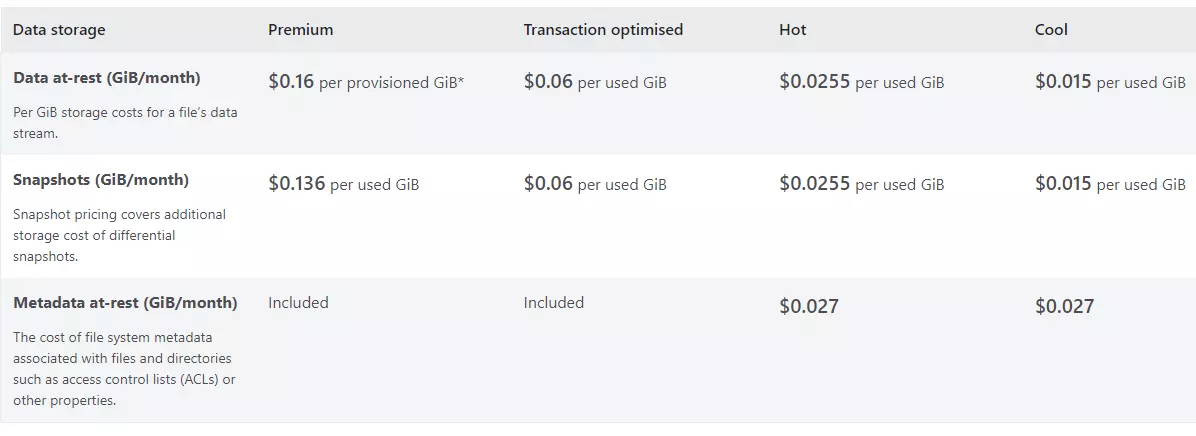
Azure Files shares pay-as-you-go pricing
Here are prices for the same Azure Files storage but with reserved capacity pricing.

Azure Files shares reserved capacity pricing
Finally, here are the costs of data transfers and various operations for Azure Files storage.
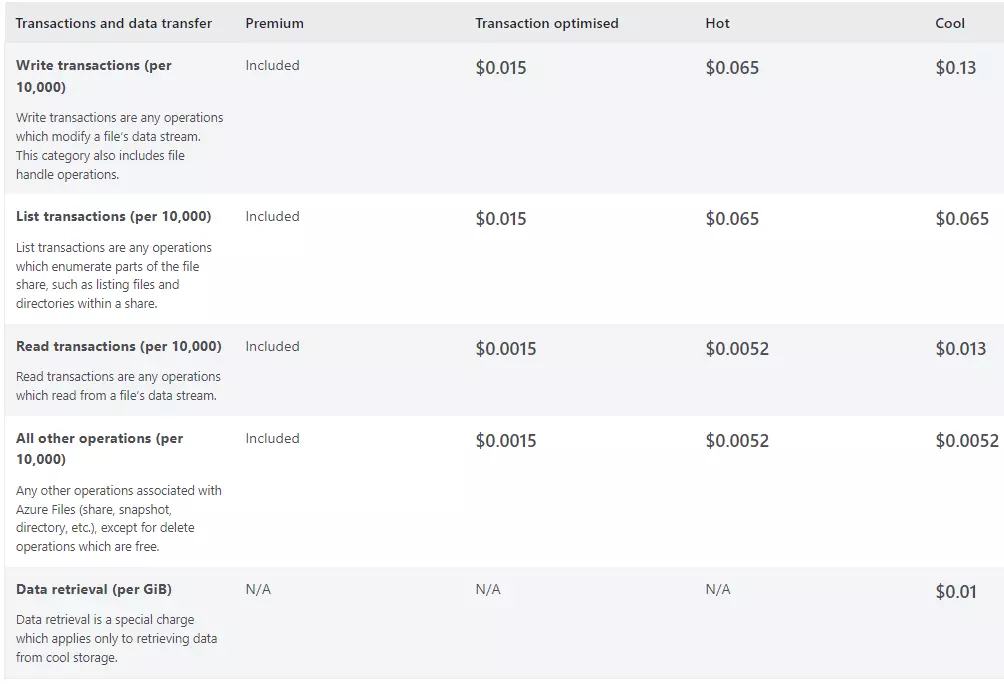
Azure Files transactions and data transfer costs
You can find the most up-to-date cost information for Azure Files shares (and all other costs) here.
Pricing for Azure Tables
Azure designed this storage type to support NoSQL storage for semi-structured and unstructured data, such as that found in address books and web applications. It behaves as a NoSQL key/value store with semi-structured datasets.
Expect two pricing methods here:
1. For tables encrypted with a key that’s scoped to the service
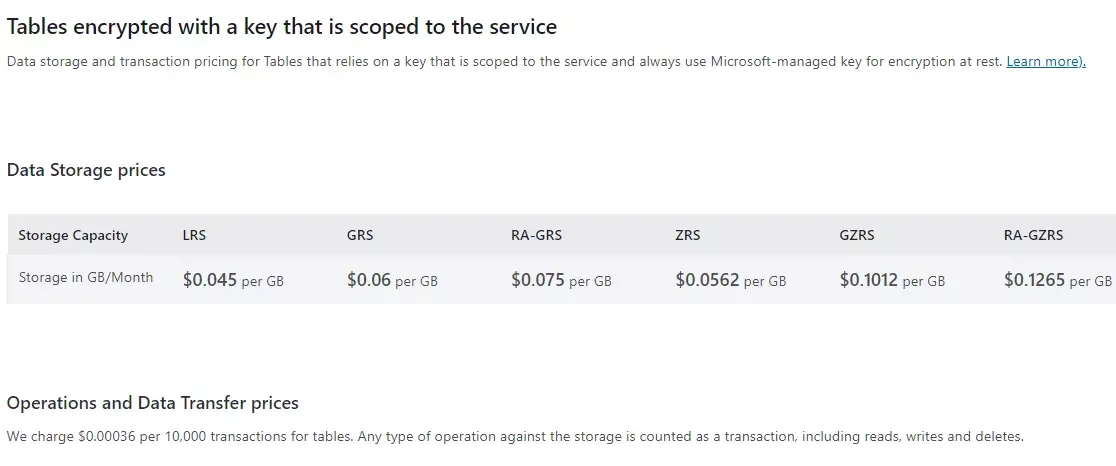
Azure tables storage pricing in West US 2 Region
2. And, for tables encrypted with a key that’s scoped to the storage account
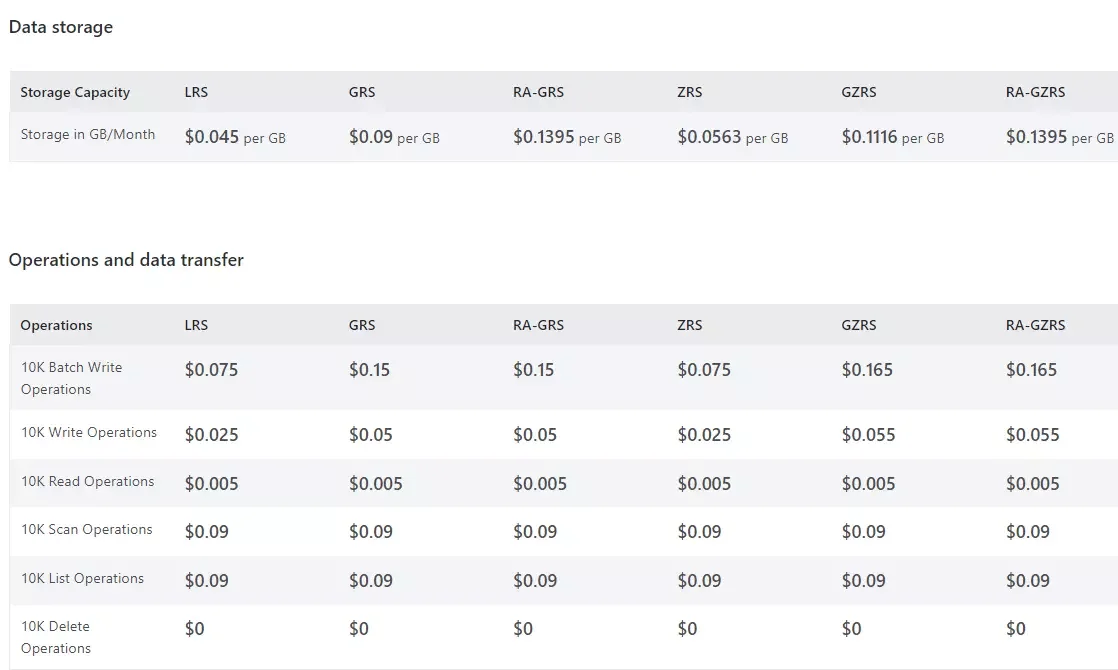
Azure tables storage pricing (key scoped to storage account) in West US 2 Region
For the latest Azure tables pricing, check out this page.
Pricing for Azure Queues
Queues delivers a robust, cloud-based queues storage service. A queue comprises a group of messages and generally stores them for asynchronous processing. Messages can be as large as 64 KB, with a default seven-day time-to-live.
Sender components, such as a web or mobile app, add messages to the queue. Receiver components process messages after retrieving them from the front of the queue.
Azure Queues for a recommended account type (general purpose v1) are:
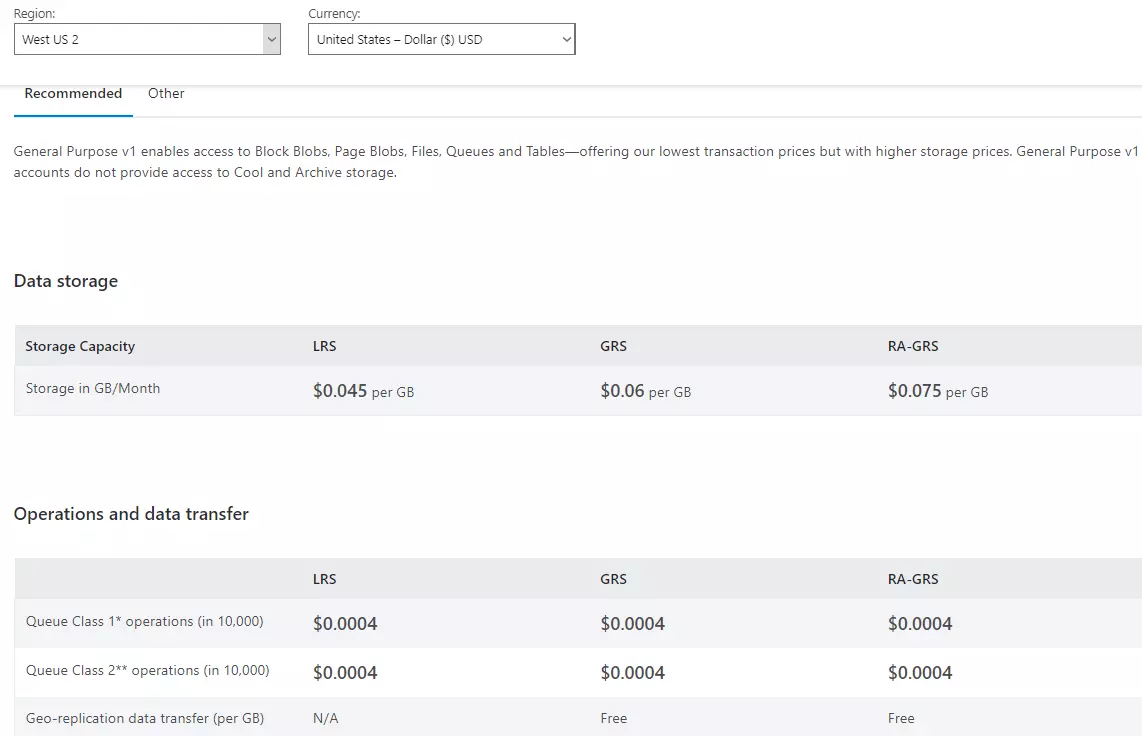
Azure Queues pricing – recommended storage account type in West US 2 Region
Or, you can use the general-purpose v1 account type:
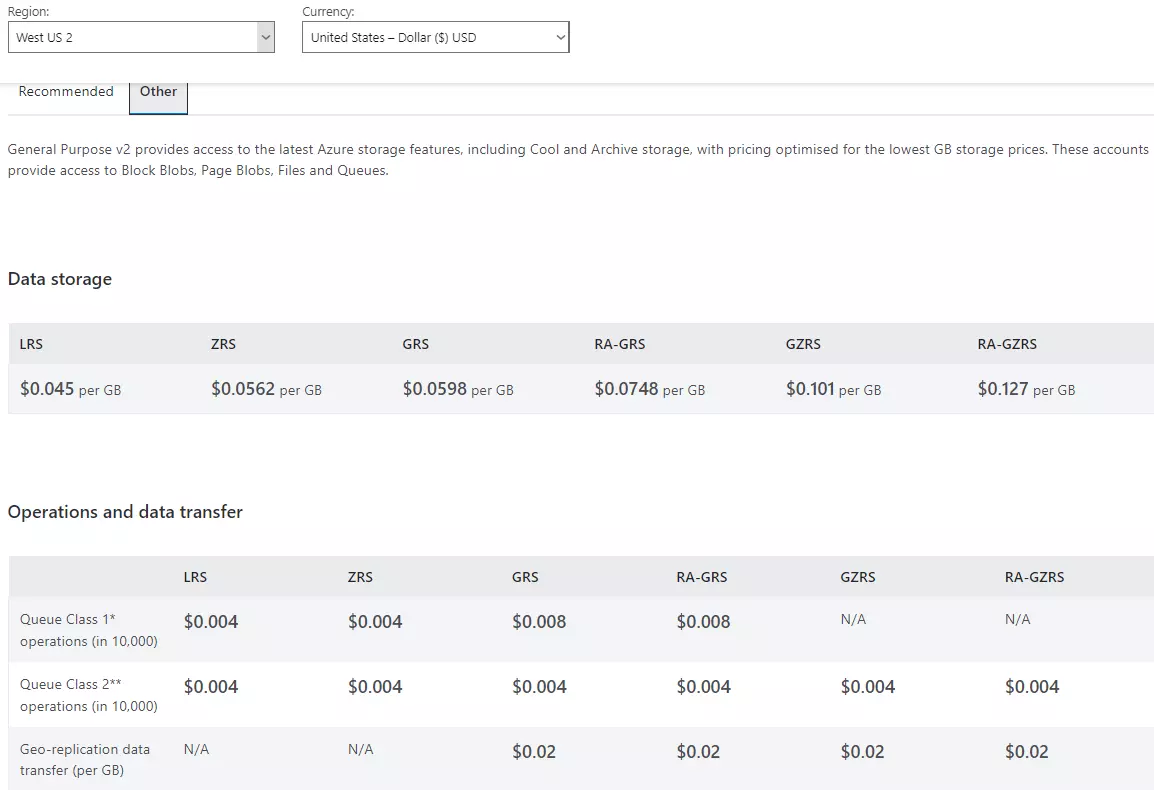
Azure Queues pricing – general-purpose v2 storage account type in West US 2 Region
You can find the latest pricing updates for Azure Tables storage here.
Pricing for Azure Disks
Azure Disks are fully managed virtual disks that deliver block-level storage for Azure Virtual Machines. Many companies use them to virtualize non-cloud-native workloads through lift-and-shift migration, as they function similarly to physical on-premises disks.
You only need to specify the disk size, type, and provisioning, and Azure handles the rest. Each disk in a VM serves one of three functions:
- Operating System Disk: Contains OS files, up to 2,048 GB.
- Data Disk: Stores data like database files or application code. A VM can have multiple data disks, each up to 32,767 GB.
- Temporary Disk: For short-term storage (page or swap files). Not for critical data — these are erased during maintenance.
Azure offers four disk types: Standard HDD, Standard SSD, Premium SSD, and Ultra Disk Storage.
Managed disks are billed hourly and priced to the nearest tier that matches the disk size.
Each Azure-managed disk option has unique pricing, which can be found on this page.
Pricing for Azure Page Blobs
Page Blobs are unmanaged disks designed for random reads and writes. They’re ideal for workloads that overwrite data segments at known addresses, such as index-based structures.
You can access them via REST API or attach them to VMs as unmanaged disks. Billing is hourly.
For precise Page Blobs pricing, see this page.
Pricing for Azure Data Lake Storage Gen2
Azure Data Lake Storage Gen2 lets you scale storage and compute independently for analytics. You can tier storage up or down based on usage and use automated lifecycle management to save costs.
It supports large-scale ingestion, processing with Azure Databricks, HDInsight, or Synapse Analytics, and visualization with Power BI.
Check out this page for the most up-to-date Azure Data Lake Storage Gen2 prices.
9 Azure Storage Best Practices For Understanding, Optimizing, And Reducing Costs
The following Azure storage cost optimization tips can help you lower your costs without compromising your system’s performance. We’ll keep them short and sweet.
- Understand your Azure storage requirements. These top Azure cloud monitoring tools and best practices can help you track and optimize your usage patterns.
- Rightsize your storage and compute to minimize waste.
- Once you know roughly how much storage you need, use Azure Storage reserved capacity to take advantage of commitment discounts.
- Terminate compute resources that you no longer need. Be sure to detach all services before terminating the resources.
- Delete unattached volumes (Azure managed disks) once you delete the associated compute resources. You can do this via PowerShell or Azure’s dashboard.
- Within your Azure Storage Account, look for “Virtual Hard Disk.” You’ll see disk properties on the overview tab. If a disk’s status is “unlocked” and its lease state is “available”, that resource is unattached to any volume. You can delete it.
- Automate storing less frequently accessed data in Cool storage and rarely accessed data in Archive storage for the cheapest prices.
- Keep less I/O-intensive workloads on Standard disks instead of Premium or Ultra Disk storage.
- See exactly where your Azure Storage budget is going with CloudZero.
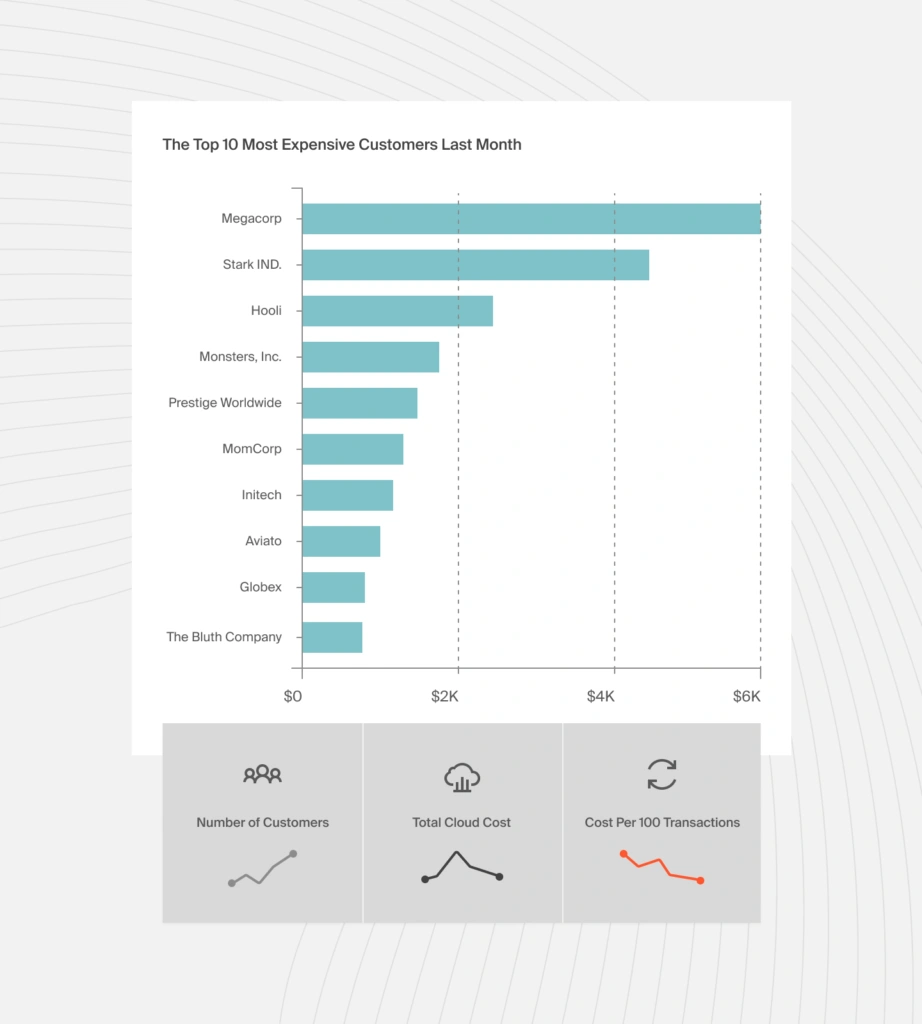
CloudZero automatically aggregates, analyzes, and shares precise unit cost insights in the context you care about.
For example, CloudZero breaks down your Azure costs per individual customer, per Azure service, per product, per software feature, team, project, and more. This applies whether you have perfect or messy cost allocation tags.
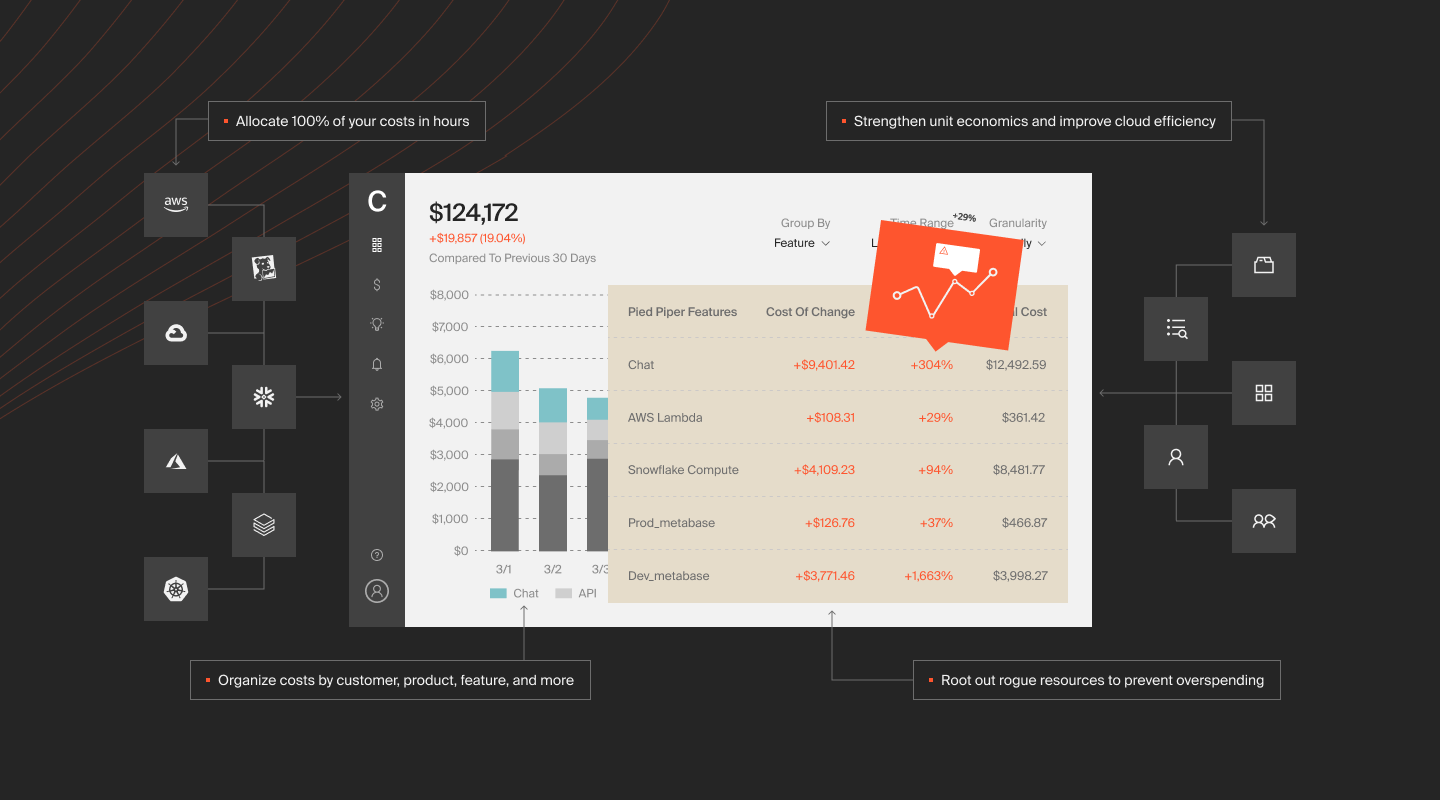
You can even view your costs by environment or a specific tenant in a multi-tenant environment. CloudZero’s real-time cost anomaly detection alerts you via Slack about trending costs so you don’t go over budget or get a surprise Azure storage bill.
It’s one thing to read about CloudZero; it’s another to see it in action.  to see for yourself how CloudZero can help you better understand, manage, and optimize your cloud spend.
to see for yourself how CloudZero can help you better understand, manage, and optimize your cloud spend.
Azure Storage Cost FAQs
What pricing model does Azure Storage use?
Azure Storage pricing is based on a pay-as-you-go model. You pay for the storage resources you use. There are no upfront payments or contracts required.
What are the factors that affect Azure Storage pricing?
There are multiple Azure Storage cost variables. The main ones are storage capacity, Azure region, storage account type, storage service type, storage access tier, data transfer fees, selected payment option, data redundancy level, and data operations (I/O) charges.
What are the six Azure Storage types?
The primary Azure Storage services include Blob storage, File storage, Table storage, Queue storage, Managed Disks, and Data Lake Storage Gen2. Each storage service has unique pricing and use cases.
What are the differences between the three Azure storage tiers?
Hot storage retains frequently accessed data for up to 30 days. Cool storage keeps less frequently accessed data for at least 30 days (cheaper than Hot storage). Archive storage hosts rarely accessed data for at least 180 days and is the cheapest.

